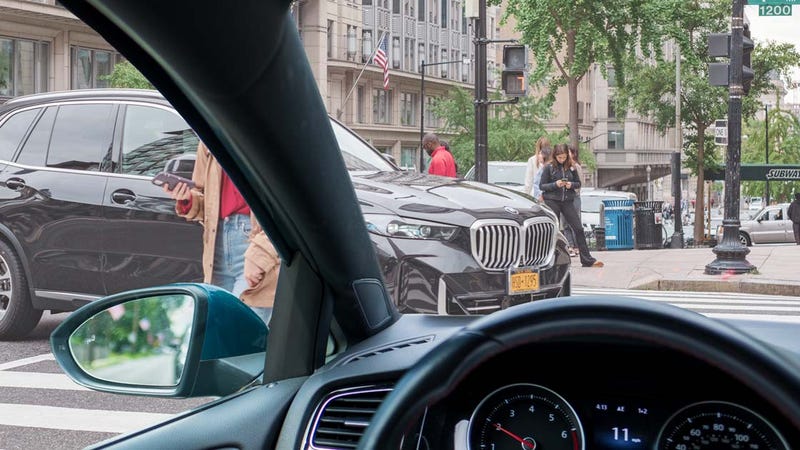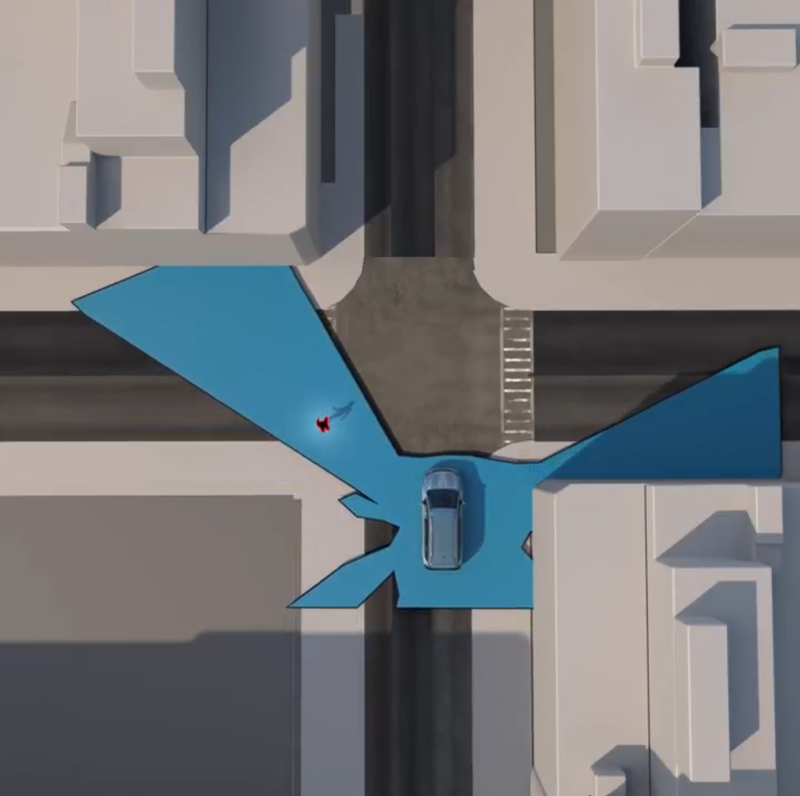
(WWJ) New cars and trucks have a big problem with blind spots.
“We’re pretty alarmed at the increases we’re seeing now that we’ve been able to quantify these blind zones,” says Becky Meuller, a Senior Research Engineer with the Insurance Institute for Highway Safety.
The Institute, along with the U.S. Transportation department measuring blind spots in six vehicles, and noting the change over the past twenty five years. Meuller says design changes have reduced drivers visibility significantly, increasing the possibility of a collision and putting pedestrians at risk.
“In some of these vehicles, we’re seeing a thirty percent, forty percent reduction in your ability to see those people and react appropriately.”
Researchers examined changes in blind spots on six popular models that have seen many changes over the years. The Honda CRV saw the most dramatic change. Ford’s F-150 was also listed as problematic. The Honda Accord and Toyota Camry did best, but all of the vehicles examined had better visibility twenty five years ago.
“The across-the-board decrease in visibility for this small group of models is concerning. We need to investigate whether this is a broader trend that may have contributed to the recent spike in pedestrian and bicyclist fatalities,” IIHS President David Harkey said.
Pedestrian deaths have increased 37 percent over the past twenty five years. Bicyclist deaths are up 42 percent.

To do the research, IIHS came up with a new way of measuring visibility using a 360 degree camera from various positions on the driver side, coupled with computational software.
“This study also illustrates that the new method developed by IIHS gives researchers a straightforward, repeatable way to assess driver visibility,” said Harkey.
For years, the Insurance Institute has come up with new ways to measure the safety of new cars and trucks. It’s all an attempt to pressure carmakers to make vehicles that are already safe, even safer.
Meuller says this will be a part of their overall testing going forward, along with traditional crash tests, headlight measurements and examining overall safety from the front and back seats.
“The long term goal would be that all of the vehicles we currently rate for things like crashworthiness and crash avoidance, we can also be able to provide consumers with information about the blind zones.”
